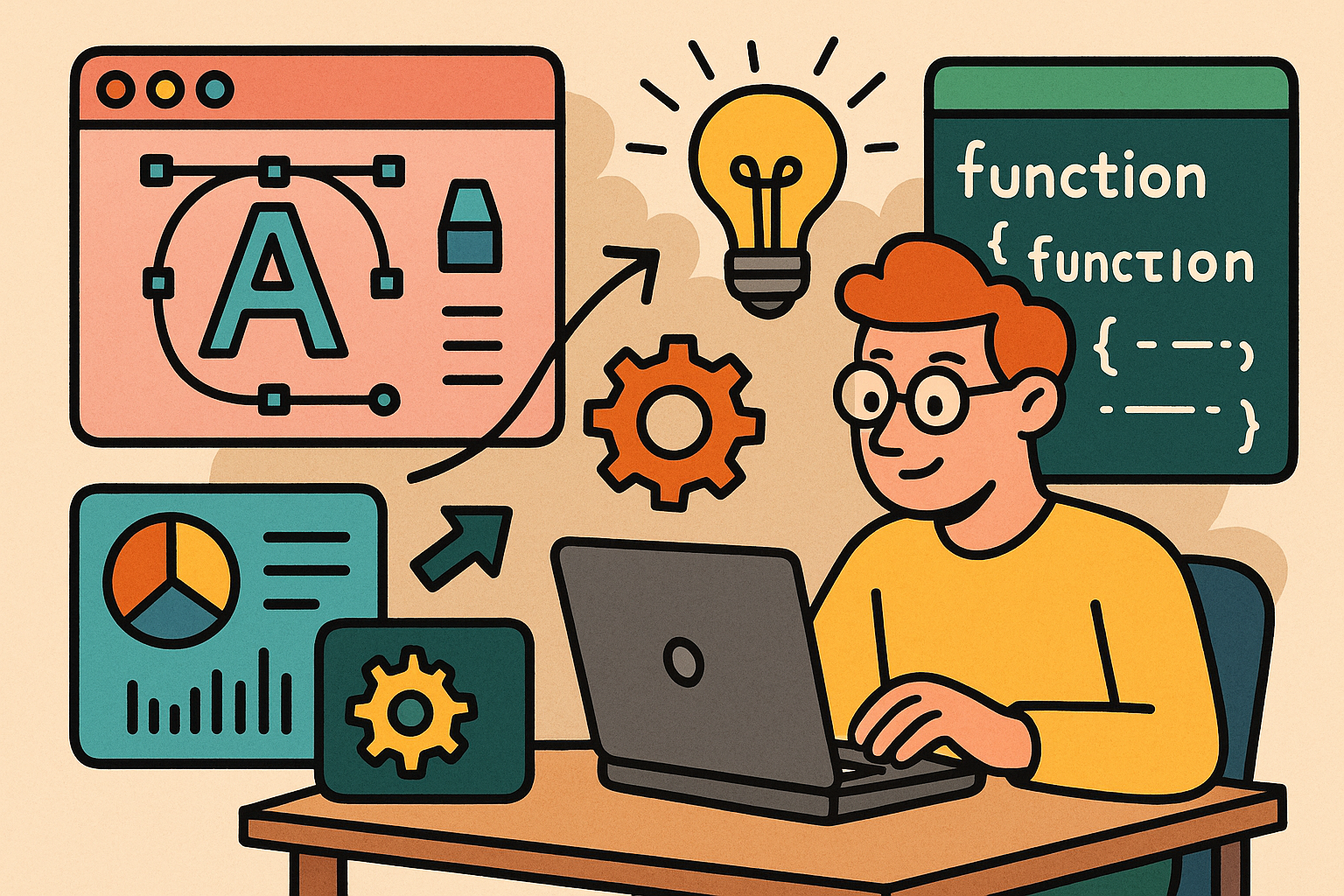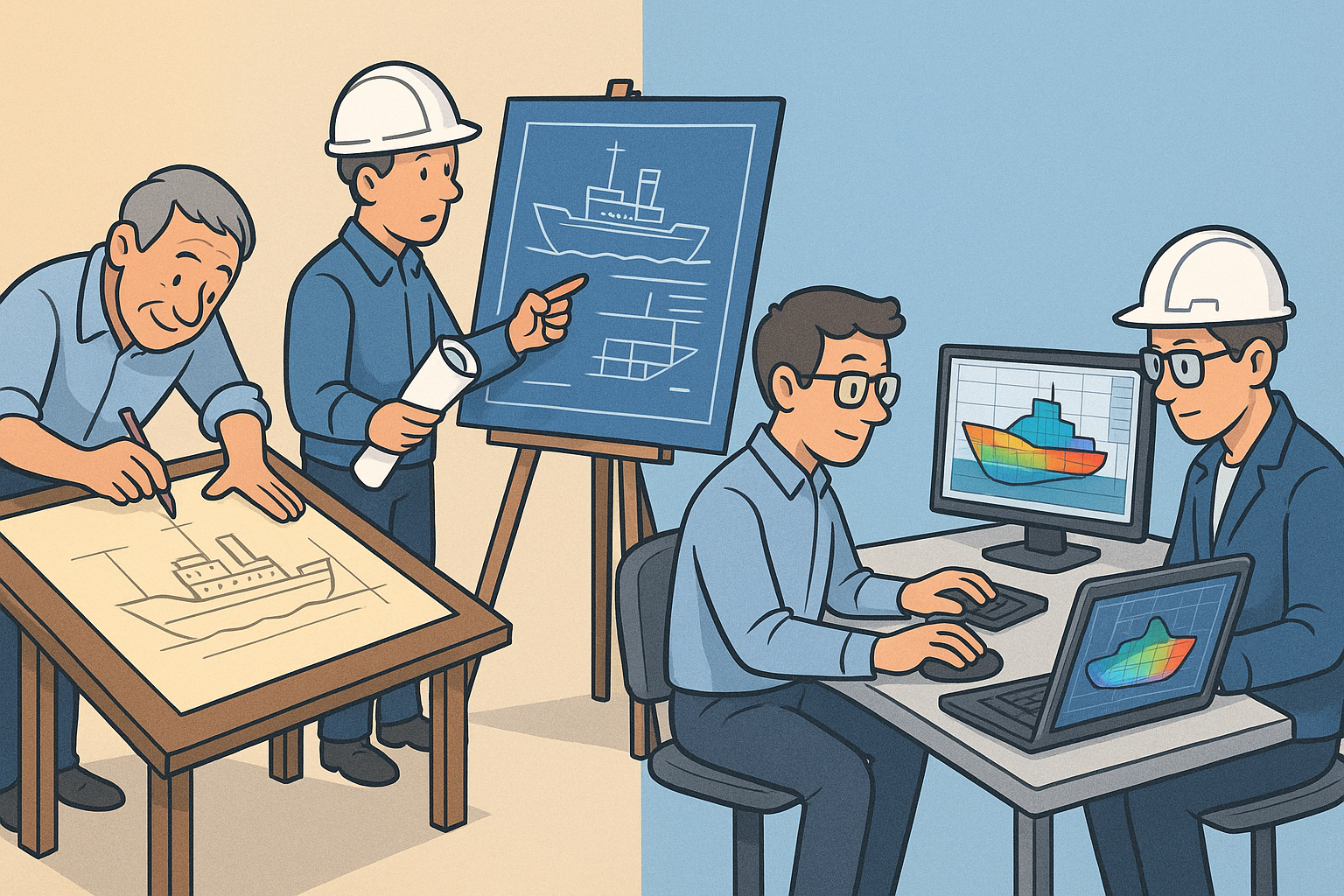Your Cart is Empty
Customer Testimonials
-
"Great customer service. The folks at Novedge were super helpful in navigating a somewhat complicated order including software upgrades and serial numbers in various stages of inactivity. They were friendly and helpful throughout the process.."
Ruben Ruckmark
"Quick & very helpful. We have been using Novedge for years and are very happy with their quick service when we need to make a purchase and excellent support resolving any issues."
Will Woodson
"Scott is the best. He reminds me about subscriptions dates, guides me in the correct direction for updates. He always responds promptly to me. He is literally the reason I continue to work with Novedge and will do so in the future."
Edward Mchugh
"Calvin Lok is “the man”. After my purchase of Sketchup 2021, he called me and provided step-by-step instructions to ease me through difficulties I was having with the setup of my new software."
Mike Borzage
Empowering Design Innovation: The Role of Custom Scripting in Modern Software
October 21, 2025 10 min read


Context and Importance of Custom Scripting in Design Software
The evolution of design software over the past several decades represents a major paradigm shift in how professionals approach the process of creative and technical problem solving. Historically, designers were constrained by off-the-shelf tools that offered limited flexibility; however, with the rapid advancements in computing power and the advent of **custom scripting** capabilities, design professionals now have the power to tailor their tools in ways that exactly match their unique requirements. Today, the demand for customization is higher than ever, propelled by the increasing complexity of design projects, where a one-size-fits-all approach is no longer sufficient. This evolution has been marked by an increasing convergence between coding and design, where users harness the power of scripting languages to automate repetitive tasks, dramatically speeding up the design cycle. For many, the introduction of automation has transformed labor-intensive processes into streamlined workflows, thereby elevating productivity while reducing the risk of human error.
Background and Evolution of Design Software
The development of design software can be traced back to simple computer-aided design (CAD) applications that enabled users to draft two-dimensional representations of buildings or mechanical components. As both the software and the hardware advanced, engineers and architects demanded solutions that could handle three-dimensional modeling, dynamic simulations, and complex parametric adjustments. Driven by these demands, many of the modern packages have embraced scripting as a core element to empower advanced customization. This evolution highlights the critical importance of embedding scripting capabilities within design software, allowing designers to consistently innovate and try out new configurations without fear of compromising the integrity of their design workflows. Scripting practices have evolved concurrently with technology such that many design tools now come equipped with robust scripting APIs and integrations that facilitate a closer union between human creativity and machine precision.
Automation and Enhanced Workflow Efficiency
The role of scripting in automating workflows cannot be overstated. Custom scripts allow designers to avoid redundant work and free up mental capacity for higher-level creative tasks. When repetitive tasks such as batch processing, parameter modifications, and dynamic content generation are automated, the design process becomes not only faster but also significantly less prone to errors. This efficiency is critically important in industries where time-to-market is a competitive advantage. Moreover, the ability to quickly revise and iterate design iterations via custom scripts enhances flexibility in a way that static software configurations simply cannot match. In practical terms, this means that complex simulations and modifications, which once required manual recalibration over extended periods, can now be adjusted in real time. The benefits of such efficiency are evident in several key areas:
- Reduced manual intervention in routine tasks
- Consistent application of design standards across projects
- Faster turnaround times for revisions and updates
- Enhanced accuracy in simulation and analysis
The ability to customize and modify a workflow on the fly illustrates why custom scripting has become an indispensable tool for design professionals, particularly those engaged in cutting-edge design and engineering tasks. By integrating these scripting strategies, designers can focus on solving challenging problems rather than managing mundane details, and this shift in focus is one of the central reasons why the adoption of custom scripting continues to gain momentum in the contemporary design landscape.
Core Principles and Techniques in Custom Scripting
The foundational principles of custom scripting in design software are built upon an understanding of both the **programming languages** that support these tasks and the underlying APIs that allow scripts to interact with core software functions. Over time, various scripting languages have become popular within the design community, including Python, JavaScript, and proprietary scripting engines integrated into major design platforms. The decision to use one language over another can often depend on the user’s familiarity, the specific requirements of the project, or the inherent features of the design software in question. In many professional environments, Python has emerged as a favorite due to its simplicity and extensive library ecosystem that supports a wide range of automation tasks. JavaScript also holds a valuable niche, particularly in situations where the design process involves significant web integration and interactive content creation. Regardless of the language, the primary goal remains the same: to create an adaptive environment that drives higher levels of efficiency and accuracy in design tasks.
Scripting Languages and APIs in Design Tools
A closer look at the **common scripting languages** reveals that the choice of language is often dictated by the specific design tool or platform. For instance, many CAD software systems offer robust Python APIs that allow for seamless integration between the scripting environment and the design tools themselves. These scripting languages facilitate various tasks such as batch processing, where multiple files or design models are modified in a single operation; parameter-based modifications, which enable quick adjustments of design specs; and generation of dynamic content, where elements of a design may be created through algorithmic rules. In addition, proprietary scripting engines are frequently tailored to leverage the unique features of certain platforms, thus offering an even more streamlined approach to automation. The combination of these languages and APIs enables a richer, more interactive design environment where creative freedom is enhanced by computational power and precision.
Key Automation Techniques and Workflow Integration
Custom scripting is not just about choosing a language; it is equally about understanding how to apply key automation techniques that create value across the design workflow. One of the most practical techniques used is batch processing, where a series of consistent tasks—such as routine updates or repetitive modifications—are automated, freeing up valuable time for more innovative tasks. Another common method is parameter-based modification, which allows designers to quickly alter aspects of their design models by changing input parameters, thus enabling rapid iterations and fine-tuning of the final product. Additionally, dynamic content generation, wherein scripts produce design elements automatically based on predefined conditions, is an increasingly popular approach. Integrating these techniques with existing design workflows is accomplished by leveraging APIs that allow scripts to interact directly with software components. This integration makes it possible to create flexible, reliable systems that enhance productivity and ensure consistency between different phases of a project. Effective custom scripting, therefore, involves not only technical proficiency but also a strategic understanding of the workflow processes that ultimately drive innovation. The following bullet points summarize the benefits of these techniques:
- Increased productivity through automation of repetitive tasks
- Higher accuracy in executing complex design modifications
- Enhanced adaptability to shifting project requirements
- Streamlined integration with existing design workflows
The integration of these automation techniques is vital in ensuring that custom scripting remains an effective tool for solving modern design challenges. By judiciously deploying scripting strategies and ensuring that they align with the project’s objectives, designers can create workflows that are not only efficient but also sufficiently flexible to adapt to emerging design trends.
Practical Applications and Implementation Strategies
Custom scripting is more than a technical capability; it represents a strategic asset that enables design software professionals to tackle complex tasks with unparalleled efficiency. In real-world projects, the implementation of custom scripts has led to substantial improvements in the overall outcomes of design tasks. For example, automating CAD modifications allows designers to quickly accommodate changes in design parameters without the need to entirely redraw or reconfigure models. Similarly, simulation routines that once required significant manual input have been streamlined with automation scripts that run analyses and adjust designs based on input data in real time. These practical applications are driven by a blend of rigorous planning, a deep understanding of both the software and its API capabilities, and a commitment to continuous improvement in coding practices. This blend ensures that scripts not only work effectively from the start but can also be maintained and updated to meet evolving project demands over time.
Streamlining CAD Modifications and Simulation Routines
In many design environments, one of the most transformative applications of custom scripting is the streamlining of CAD modifications. Custom scripts have the capacity to handle a variety of modifications in a fraction of the time required for manual adjustments. By leveraging parameter-based script elements, designers can implement **real-time updates** across entire assemblies or complex component relationships. Simulation and analysis routines benefit equally from automation, as scripts can be developed to conduct thorough analyses automatically, adjusting parameters on the fly and alerting users to any inconsistencies or potential issues. The impact of these practices is broad, as they allow teams to focus on refining the design rather than getting bogged down by repetitive tasks. The technical approach for such applications often includes:
- Batch processing scripts that modify multiple design files simultaneously
- Dynamic content generation ensuring that updates propagate through the model
- Automated error-checking routines to verify the integrity of design modifications
- Procedural generation techniques for simulating design variations quickly
These scripting practices facilitate a more consistent workflow, where the interplay between design modifications and simulation is fluid and adaptive. This homeostatic balance between automated and manual inputs has proven to be a significant advantage in many design contexts. By incorporating these custom scripts into their routines, design professionals can not only increase the efficiency of individual processes but also ensure that the overall design system remains robust and responsive to unexpected changes. Additionally, the integration of error-handling strategies in scripting routines further safeguards the design process, ensuring that automation does not lead to undetected faults or oversights.
Best Practices for Script Development and Team Collaboration
Implementation strategies for custom scripting require a disciplined approach to both coding and workflow integration. Best practices emphasize the importance of writing modular code that can be easily maintained and updated. This modular coding paradigm ensures that individual components of a script are reusable and can be tested independently. Techniques such as rigorous error handling and systematic debugging practices are essential to avoid pitfalls that might arise from complex integrations. In this context, the following best practices are often recommended:
- Modular coding paradigms that ensure reusability and easier maintenance
- Robust error handling techniques to catch and manage exceptions
- Comprehensive testing routines that validate every component of the script
- Clear documentation for long-term maintenance and knowledge sharing
Cross-functional collaboration is also a critical factor in ensuring the success of custom scripting in design environments. Collaboration between designers, software developers, and product engineers facilitates an exchange of ideas, which ultimately leads to more robust and versatile automation solutions. When teams work together to integrate custom solutions, they are better equipped to identify specific pain points in the design process and to develop targeted scripts that eliminate these bottlenecks. This collaborative approach not only improves the efficacy of the automation solutions but also promotes a culture of continuous improvement and innovation within the organization. By sharing insights on programming strategies, debugging techniques, and integration methods, teams are able to maintain a dynamic workflow that can adapt to the rapid pace of technological advancements. In summary, practical application of custom scripting in the design process demands not only technical skill but also careful collaboration across multiple disciplines, ensuring that every aspect of the design process benefits from enhanced automation and streamlined operations.
Challenges, Future Developments, and Conclusion
While the benefits of custom scripting in design software are widely recognized, the path to implementing these solutions is not without its challenges. Compatibility issues often arise when scripts are developed against a specific version of a software platform, only to become obsolete as the platform evolves. This necessitates a disciplined approach to coding that is adaptable and future-proof, especially in an environment where software updates and platform improvements are constant. Additionally, there is often a delicate balance between creating a script that is highly flexible and one that remains accessible for non-programmer designers. This balance is crucial because while some users require in-depth customization options, others rely on intuitive interfaces that abstract away the complexities of code. Achieving the right level of flexibility while maintaining usability is a persistent challenge for development teams. To summarize the challenges faced in this domain:
- Compatibility issues with evolving software platforms
- Ensuring usability for non-programmer designers
- Maintaining robust documentation for ongoing support
- Balancing flexibility and simplicity in scripting interfaces
As the design software landscape continues to evolve, so too will the practices surrounding custom scripting. One of the most exciting future trends is the increasing integration of AI-assisted scripting. This new wave of innovation is expected to further reduce the burden on designers by introducing predictive coding, automated error correction, and smart integration with cloud-based collaboration tools. Looking ahead, the integration of cloud-based solutions will not only bolster script interoperability but also facilitate remote collaboration, making it easier for cross-functional teams to work together in real time. Future developments may also see enhanced scripting environments that are tightly coupled with design software, creating seamless ecosystems where **automation and human creativity** coexist harmoniously. The possibility of incorporating machine learning models to predict design adjustments and streamline repetitive tasks is already beginning to reshape the industry, promising even greater efficiency gains and design innovation.
Addressing the Challenges with Forward-Thinking Strategies
In light of the challenges, design professionals are increasingly adopting forward-thinking strategies to ensure that their custom scripting implementations remain relevant and effective. Proactive measures such as regular software updates, extensive testing phases, and the adoption of best practices in documentation have become central to minimizing the disruptions caused by compatibility shifts. Another critical strategy is the cultivation of a culture of learning and adaptation where designers are encouraged to continuously update their skills, not only in traditional design techniques but also in scripting and automation methodologies. This dual competence enables teams to anticipate challenges rather than react to them, ensuring that custom scripts remain functional and effective over time. Moreover, by embracing collaborative tools and platforms, teams are able to share insights and overcome challenges that may seem insurmountable when tackled in isolation. The role of AI-assisted scripting is particularly promising, as predictive analytics and machine learning models can preemptively alert users to potential issues, thereby enhancing the overall reliability and robustness of the design processes.
Conclusion: Embracing Custom Scripting for Continued Innovation
In conclusion, custom scripting stands as a cornerstone for modern design practices, revolutionizing how designers approach challenges and enabling unprecedented levels of automation, flexibility, and efficiency. By integrating scripting into the everyday workflow of design software, professionals are not only streamlining their processes but also pushing the boundaries of what is possible in terms of design innovation. The journey toward fully automated design processes involves overcoming significant challenges—ranging from compatibility issues to the need for user-friendly interfaces—but the benefits far outweigh these hurdles. The capacity to rapidly iterate, validate designs, and innovate without being bogged down by repetitive tasks is invaluable in today’s fast-paced design environments.
As technology continues to advance and software platforms evolve, staying current with emerging technologies is crucial. Whether through the integration of AI-assisted scripting or the adoption of cloud-based design solutions, the future of custom scripting promises to drive further enhancements in productivity and quality. By investing in robust scripting strategies and fostering a culture of continuous learning and collaboration, design professionals will be well-equipped to harness these advancements and maintain a competitive edge in an ever-changing landscape. Ultimately, the sustained commitment to integrating custom scripting into design workflows underscores the industry’s resolve to meld the creative with the computational, paving the way for innovations that not only meet but exceed the demands of modern design challenges.
Also in Design News

Rhino 3D Tip: Optimizing Design Visualization with Section Tools in Rhino 3D
October 21, 2025 3 min read
Read More
Design Software History: Evolution of Marine Engineering Software: From Manual Drafting to Advanced Computational Design Technologies
October 21, 2025 7 min read
Read More
Cinema 4D Tip: Optimizing Texturing Techniques in Cinema 4D for Realistic Surfaces
October 21, 2025 2 min read
Read MoreSubscribe
Sign up to get the latest on sales, new releases and more …


